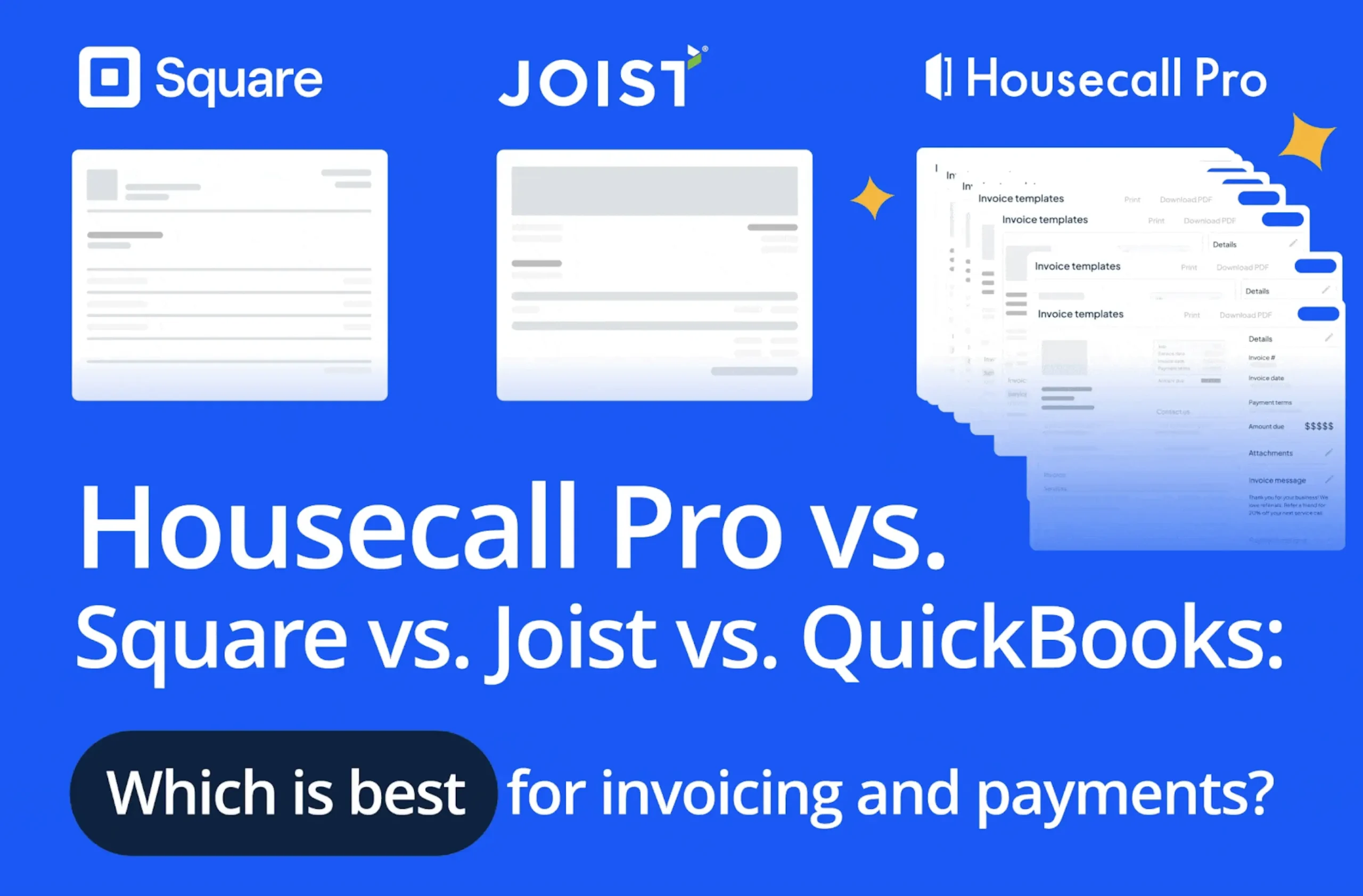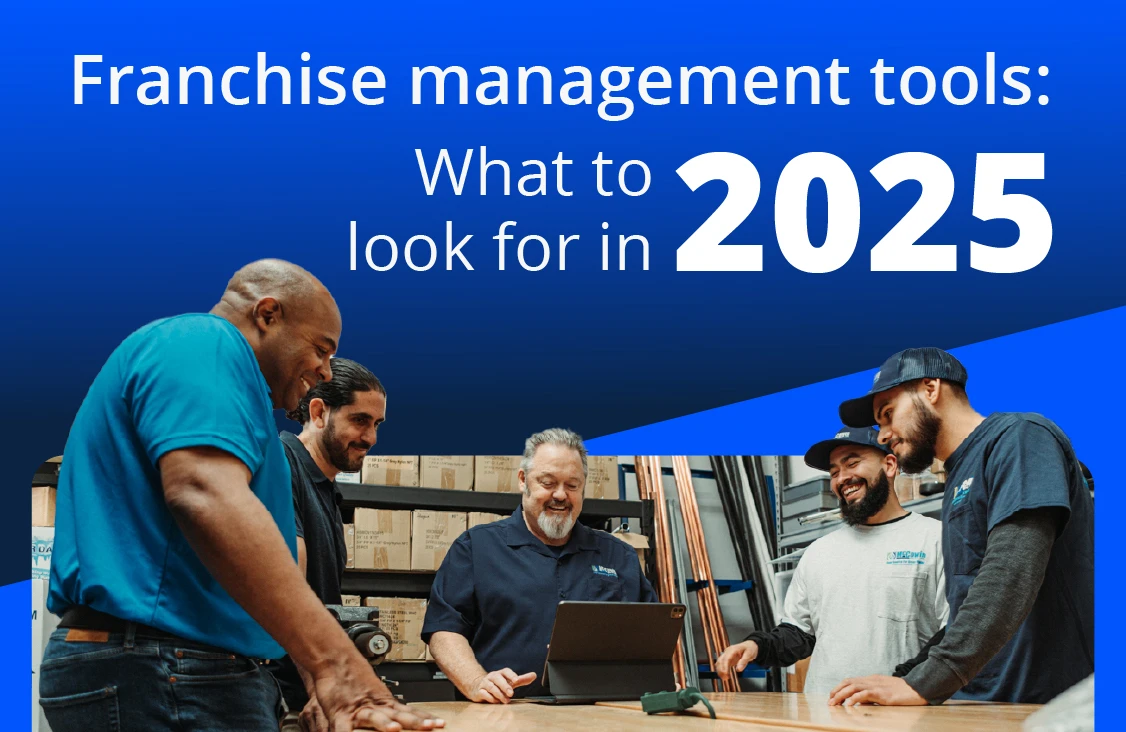
The costs of running a business can add up fast. Before you know it, you’re struggling to break even. Every business owner knows this all-too-familiar pain, where operating costs eat into your monthly profits. If profit margins are already thin, you need to be smart about cutting costs quickly without your product or service bearing the brunt of it.
In this guide, we’ll break down the concept of operating costs and how they impact your bottom line. We will also suggest actionable plans to maintain healthy profit margins without jeopardizing quality.
Reduce Service Business Costs Without Cutting Corners
What Are Operating Costs?
Operating costs refer to day-to-day maintenance and administrative expenses that a business incurs. There are two types of operating costs for home service businesses:
Fixed costs: They are the same every month, regardless of your sales volume. Fixed costs include the following:
- Office or workshop rent
- Insurance premiums, e.g., workers’ compensation and vehicle insurance
- Salaries of office and administrative staff
- Automated software and subscription costs
- Vehicle lease payments for service delivery vans
Variable costs: These costs vary each month, depending on the number of jobs you complete. When business is good, expect these costs to increase more than usual. Examples include:
- Technician labor costs that pay per job or by the hour
- Fuel and vehicle maintenance costs
- Equipment, materials, and supply costs
- Business marketing or advertising costs
Overhead vs. Operating Costs
Both overhead and operating costs help you run your business, but they affect the bottom line in different ways.
Overhead Costs
Overhead costs are indirect expenses that, like fixed costs, remain unchanged regardless of the number of jobs you take on. You will incur them as part of your daily business management duties, but have nothing to do with a specific service offering. Think of them as the electricity bills for your office—they keep everything running, even if no jobs are coming in that day.
For example, if you run an HVAC repair or plumbing business, overhead costs can include:
- Office rent expenses
- Software subscriptions for invoicing and scheduling
- Salaries for your office manager and assistant
- These costs will remain constant whether you have one client or fifty.
Operating Costs
Operating costs are more direct but varied. They’re strongly tied to your service deliveries and the number of jobs coming in each month. For instance, if you run a plumbing company, your operating costs would include expenses for materials like pipes or fittings, service van fuel and maintenance, and technician wages for scheduled jobs.
The more jobs you complete, the more expenses you rack up, leading to higher operating costs.
There is also a seasonal component to your spending. Some expenses are likely to remain constant year-round, such as rent, insurance, or office salaries. Others can fluctuate, surging, or dipping depending on seasonal factors.
For example, HVAC repair businesses may face higher fuel and labor costs in summer and winter due to higher demand.
Real-World Example HVAC Operating Costs
To better understand operating costs, let’s break down the hypothetical expenses of an HVAC business. CoolAir HVAC is a family-run business with monthly operating costs of $65.5k. Here’s what their monthly operating costs might look like:
| Expense | Amount | Cost Type |
| Technician wages | $28,000 | Fixed |
| Fuel and vehicle maintenance | $6,500 | Variable |
| Rent and utilities | $5,000 | Fixed |
| Insurance | $3,500 | Fixed |
| Equipment and materials | $8,000 | Variable |
| Marketing and advertising | $5,000 | Variable |
| Administrative salaries | $6,500 | Fixed |
| Software and subscriptions | $3,000 | Fixed |
To break even and cover their expenses, CoolAir must earn at least $2,183 per day in revenue.
Understanding this simple breakdown and highlighting a break-even point for your business can give you a framework for cutting or managing costs to maintain a decent profit margin.
How Do Operating Costs Affect Profit Margins?
Business operating costs directly affect the bottom line, aka your profit margins. The lower your operating costs, the greater your potential profit, assuming your revenue remains constant.
For instance, if you’re a plumbing company whose fuel and repair costs rise each month but your customer demand remains constant, you would earn less profit from each job—thus reducing your profit margins.
Contrarily, if you strive to keep your operating costs in check even when your revenue remains the same, you will generate more profit from each job. The bottom line: increasing profit margins doesn’t necessarily depend on increasing your revenue or service demand. It depends on how well you can keep your operating costs in check.
Pricing and Profitability
If your operating costs, such as labor wages and fuel prices, are rising, you may have to increase your service prices to cover these costs and remain profitable. Without a hike in service prices, you’ll earn much less per job while expenses keep rising.
But shouldn’t you lower your prices to attract customers? Many business owners go down this route and set their prices too low, which can result in:
- Lower profit margins despite steady revenue
- Challenges in keeping the business afloat due to low profitability
- Greater strain on resources and staff without significant profits
- Your business can struggle to break even or remain competitive without a fine balance between affordability and profitability.
When faced with such a quandary, it can be tempting to ramp up sales—an endeavor requiring significant effort. Instead, you can focus on cutting costs to rake in higher profits with half the effort. Here’s how:
- Save thousands of dollars in fuel costs annually by optimizing technician routes. This allows your team to travel to service destinations using the shortest route.
- Negotiate bulk discounts for materials and equipment with your vendors.
- Preventative maintenance can save you more money during unexpected vehicle or equipment breakdowns.
Direct Vs. Indirect Costs
Operating costs also include direct and indirect costs, each affecting your profit margin differently.
Direct costs are the job-specific expenses you incur from completing a job. More jobs equal higher direct costs. This includes the Cost of Goods Sold (COGS), namely everything that goes into providing a service. For an HVAC business, this would include everything from HVAC parts, refrigerants, and fillers to technician wages, fuel, and repairs.
Indirect costs are the heart of a business—they keep things running but aren’t tied to a specific job or service. They include Selling, General, and Administrative (SG&A) expenses, i.e., utilities, rent, marketing campaigns, office staff salaries, and invoicing or accounting software.
How to Calculate Operating Costs and Find Areas to Cut Back
Step 1: List All Your Monthly Expenses
Use this simple formula to get a clear picture of your operating costs:
Operating costs = Cost of goods sold (COGS) + Operating expenses
Make a list of your monthly expenses. This includes both your fixed and variable costs. As seen before, your fixed costs stay the same each month. List everything under these, from rent, utilities, and insurance to admin salaries and software subscriptions.
To list your variable costs, track your business activity for the month and list all associated expenses—from technician wages and vehicle repairs or fuel costs to equipment upkeep.
Next, you’ll want to differentiate your essential vs. non-essential expenses. Categorizing these will bring to the fore any superfluous expenses that may be driving up your operating costs.
For example, essential expenses include unavoidable costs such as payroll, fuel, and rent.
While nice to have, non-essential expenses might need to be curtailed to make your business more profitable. Paid ad strategies that don’t generate leads, office perks such as high-end coffee machines, and premium tech gadgets that require special maintenance fall into this category.
Step 2: Calculate Your Average Daily Operating Cost
Adding all of the above expenses gives you a daily operating cost. You can calculate it as such:
Daily Operating Cost = Operating Costs ÷ Number of Workdays per Month
For example, if an HVAC business spends $65,500 per month and operates 30 days, their daily cost is: 65,500 ÷ 30 = $2,183 per day
Knowing your daily cost allows you to set a minimum pricing goal for each job. For example, if your daily operating cost is $2,183, you’ll need to charge at least $350 per job to cover those expenses.
Based on this pricing, you can calculate how many jobs you must complete daily to minimize losses and break even. In this case, you would need at least seven jobs per day to cover your daily costs.
Lastly, daily costs can also help you identify slow seasons. When revenue drops but your daily costs remain unchanged, you can adjust your spending accordingly.
Step 3: Identify Areas for Cost Reduction
When you regularly review your expenses, everything is in the open. You can avoid surprises and curb wasteful spending. For example, you can save thousands on redundant subscriptions by using field service software that consolidates multiple tools, from scheduling and accounting to invoicing and dispatching.
Cost tracking can be daunting, but you can make it easier by investing in field service management software that integrates with accounting software like QuickBooks.
Biggest Operating Costs in HVAC, Plumbing & Home Services
Home and field service businesses have several expenses, but which are the most significant?
Labor Is Likely Your Biggest Expense
Labor expenses don’t just include your team’s salaries, but also include insurance, overtime pay, workers’ compensation, retirement benefits, and bonuses. You may also incur expenses while onboarding your technicians or investing in their training or upskilling programs.
While paying competitive wages to attract and retain skilled workers is a given, you must keep a close eye on your profit margin. To ensure high wages don’t eat into your profits, research how much the industry pays and arrive at a figure on par with them. Instead of fixed bonuses, you can offer your technicians performance-based incentives to encourage productivity.
Alternatively, you can offer non-monetary benefits like flexible scheduling and upskilling to retain talent without the added cost.
Hiring In-House Vs. Subcontractors
Another question while managing hiring costs is whether to subcontract the work or hire an in-house team. Hiring an in-house team means having a cohesive team that stays on the same page—this will allow you greater control over work quality and customer service. They’re also more likely to serve your company long-term, which is good news if you have a skilled team. The downside is that because in-house staff are on the payroll, they will incur higher costs for benefits, insurance, and taxes.
Subcontractors are relatively cheaper; you won’t need to pay them full-time benefits or payroll taxes. They also offer more flexibility, allowing you to scale your workforce if more jobs arise. However, expect less control over the quality of work and availability, as subcontractors may not always be accessible for a rush job.
In such a case, you could use a hybrid hiring model. This allows you to have an in-house team of skilled technicians while outsourcing work during high-demand and seasonal surge periods.
Fuel & Vehicle Costs Silently Eat Profits
Fuel and vehicle costs are invisible but can add up quickly, given the hours technicians spend on the road. Today, fuel prices are 35% higher than six years ago. Such a steep rise can drastically raise monthly expenses and drain your profits. The key to cutting these expenses is smart fleet management. This means:
- Using GPS-led software to plan the shortest routes between appointments
- Investing in fuel-efficient vehicles such as hybrids and electrics
- Investing in preventative vehicle repair services to avoid costly repairs
Lease vs. Buy: What’s Best for Your Business?
Leasing is a smart option if you only service homes in a limited radius. It also requires lower upfront costs, with a smaller down payment than purchasing, freeing up funds for other business expenses. Typically, you can lease vehicles for two to five years, with some agencies allowing you to upgrade to newer models in between.
Another advantage of leasing is that you can avoid out-of-pocket repair fees for vehicle maintenance, as leased vehicles are newer and have a warranty. However, leased vehicles also have mileage caps that charge more if you exceed the limit. If you serve multiple areas across long distances, leasing a car might not be viable.
Buying a fleet of vehicles or service vans may be a better option if you’re a business with high mileage needs. Though this requires a higher upfront cost, you can enjoy long-term savings as you fully own your asset. You also won’t have to worry about mileage penalties. Moreover, you can add shelving, branding, and tool racks to your car, or make other modifications without worrying about lease restrictions.
Equipment & Tools Are Necessary but Expensive
Your tools and equipment are an inextricable part of your business. Specialized tools, however, are costly. One way to save money here is to hire equipment and tools that your team does not use regularly or only on a seasonal basis. You will not have to pay for their upkeep or worry about storing them.
However, it’s always better to purchase frequently used equipment. Despite the high upfront costs, high-quality tools will serve you well over time and result in long-term savings. You can also customize or apply branding to suit specific needs.
Even so, buying equipment doesn’t always have to be expensive. You can work out a deal with your supplier on bulk orders if you have a stable workload and simultaneous appointments that call for multiple toolkits. If you’re on a tight budget, you can buy certified pre-owned or refurbished tools without compromising quality.
Lastly, most tools and equipment, while durable, can break down due to frequent use. Instead of paying money to repair them, consider investing in preventative maintenance to cover unforeseen repair and replacement costs.
Marketing & Advertising: How Much Should You Spend?
You don’t have to pump thousands of dollars into marketing; instead, set aside at least 2% to 5% of your revenue for this purpose. If you’re keen to get your new business off the ground, you might need to spend more initially to build awareness. Once the leads start pouring in, you can adjust your marketing budget to suit your goals.
Low-cost, High-ROI Marketing
If you think marketing is only about paid ads and strategies, you’re mistaken. Many marketing strategies are free, but bring in high ROI with consistent efforts. For example, search engine optimization (SEO) and organic marketing work well if you have an existing website. You can drive traffic to your site for free by providing helpful, engaging blog content.
Other steps, like updating your Google Business Profile (GBP) and Yelp page, will help you rank at the top of the search engine results and bring in leads. If digital marketing is not your cup of tea, you can fall back on old-school techniques such as word-of-mouth marketing or partner with realtors or building supers to get referrals.
Insurance & Compliance Costs
The right insurance can cover you in case of financial risks, accidents, and liability claims. It can also save you from hefty penalties or regulatory lawsuits. For instance, if your HVAC technician accidentally damages a customer’s expensive flooring while working, this insurance will pay for the repairs. Here are some must-have insurance policies:
- General liability insurance: This covers third-party damages.
- Workers’ compensation insurance: This covers everything from medical expenses to lost wages and legal fees if a technician injures themselves on the job
- Auto insurance: This protects your business vehicles from accidents, damage, or theft.
Some other important insurance policies include professional liability insurance, business owner’s policy, and surety bonds, depending on your state laws.
Compliance Costs
As a business owner, you must comply with state and regional laws to avoid disruptions. Flouting any rules can invite legal fines. To avoid this, ensure you:
- Follow state-mandated licensing and permit requirements.
- Meet Occupational Safety and Health Administration (OSHA) safety standards for workplace safety.
- Regularly review and renew mandated insurance policies.
- Maintain accurate payroll and tax documents.
- Adhere to contract and warranty laws, if applicable in your state.
How to Reduce Operating Costs Without Hurting Your Business
Operating costs can quickly deplete profits, but there are plenty of ways to cut back without compromising service quality. By being proactive and strategic, you can learn how to lower operating costs while maintaining high customer satisfaction.
1. Track Every Expense
Expenses like daily fuel, minor office supplies, and materials that seem innocuous at the outset can add up and cause a dent in earnings. Since they’re also unnoticeable, keeping track of them during daily operations can be hard. Actively monitoring such expenses, whether big or small, can help you save significantly over time.
Keeping manual track of such expenses is difficult and unsustainable—can you imagine making manual notes for expenses like office pens or notebooks daily? You’re better off using field service software like Housecall Pro that integrates with Quickbooks to automatically track your spending.
Track daily, weekly, or monthly expenses, ensuring no expense flies under the radar.
Besides daily and weekly tracking, you must also set up a stringent monthly review for business expenses. This includes reviewing key financial statements, highlighting cost-cutting areas, and ensuring enough cash flow to cover costs.
2. Automate or Outsource Admin Tasks
Tracking monthly costs is no easy feat, requiring plenty of attention and time. If you have an overburdened admin team, use software like Housecall Pro to automate some daily tasks. Focus on automating key areas of your business like:
- Customer Communication: Customer interactions with automated appointment follow-up reminders, “on my way” texts, and service confirmations—keeping customers informed without the heavy lifting.
- Invoicing and Payments: Generate and send invoices instantly, accept digital payments, and automate payment reminders.
- Expense Tracking: Stay on top of your operating costs with labor costs, and expense-tracking tools, to monitor spending and identify cost-saving opportunities.
- Scheduling Automation: Optimize your team’s schedule with drag-and-drop scheduling, automated dispatching, and real-time job updates.
This doesn’t mean you need to eliminate your admin staff. Instead, view software like a virtual assistant that helps your staff work smarter. It also frees up their time for growth-related tasks such as customer service, lead generation, and social media marketing.
Get In Touch: 858-842-5746
Let us earn your trust
On average, Pros increase monthly revenue generated through Housecall Pro by 50% after their first year.
See plan options and feature breakdown on our pricing page.
3. Cut Down Unnecessary Material Costs
Stocking up on materials, tools, and supplies quickly lapses into over-ordering, leading to excess supplies. That’s why, when learning how to lower operating costs, tracking supply purchases anywhere through a field service mobile app like Housecall Pro is necessary. Conducting regular audits, inventory checks, and setting clear reorder points can also help you avoid unnecessary purchases.
Alternatively, you can review existing or outdated equipment to see if it’s usable. Instead of discarding it, you can find ways to recycle or repurpose it. For example, you can reuse leftover insulation material for future jobs or refurbish it for alternative use.
4. Lower Fuel & Vehicle Costs with Smart Routing
The average business owner spends 23.4% of their monthly revenue on fuel. For home service businesses, this figure is even higher. One of the best ways to cut down on fuel consumption is to use GPS and route optimization technology. Doing this can reduce the time your technicians spend on the road. It can also help you schedule jobs in a logical and efficient order, helping your team avoid retracing routes that consume more fuel.
Another element that drives up operating costs is vehicle repair. According to a 2023 report, the cost of auto maintenance increased by 6.5% from the previous years. You can combat these costs by being proactive with maintenance. Regular maintenance can help prevent costly repairs during unexpected breakdowns.
5. Train Your Team to Work More Efficiently
Training is a great way to ensure your employees are productive. Productive employees work efficiently, take less time to complete tasks and make fewer mistakes. If you pay technicians by the hour, this efficiency could save you hundreds of dollars in labor wages.
Small adjustments to the workflow can work wonders. For instance, organizing tools for easy access or drafting standard operating procedures can expedite processes and help your staff operate more efficiently.
You can also use time management apps to track the time from when a job is scheduled to its completion time. This can help you improve your work process and reduce gaps between appointments, allowing your team to handle more daily jobs.
Lastly, training programs aren’t just about fulfilling a formality. It keeps your team up-to-date on the industry’s best practices and new technology. A proficient team can result in:
- Better quality of work
- Faster and efficient service and job completion
- Higher customer satisfaction
Ultimately, this will result in significant savings and more job appointments.
Saving Money Without Sacrificing Quality
A common misconception is that reducing operating costs means slashing expenses. It’s really about finding a balance so you do more with less. Maximize profit just by adopting a few simple steps, such as regularly tracking expenses, automating repetitive and time-consuming administrative tasks, and training your employees to be more productive and efficient.
Saving money and ensuring quality doesn’t have to be a tradeoff. You can do both with help from software like Housecall Pro. Service management software from Housecall Pro automates your business and helps you design smarter, faster workflows so you can focus on saving and scaling your business.
Ready to start saving? Sign up for a free 14-day Housecall Pro trial today.





